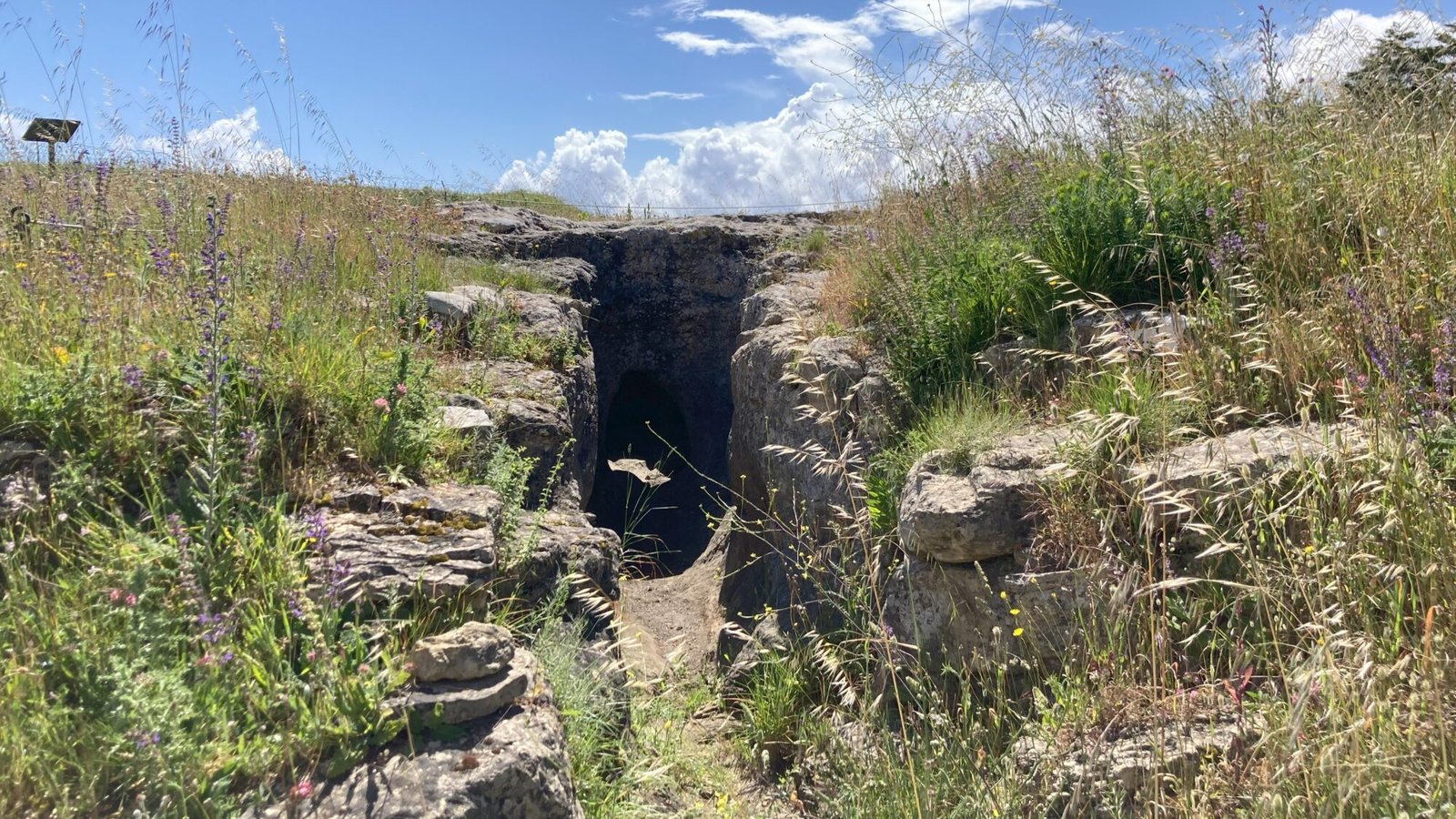ALSO KNOWN AS: Artificial Caves (Grutas Artificiais) of Tojal de Vila Chã
Stand on the hilltop and listen. You can hear the hum of traffic on the nearby motorway. Heavy vehicles from the waterworks next door rumble softly. Aeroplanes gently roar overhead. Otherwise, within the fence, all is quiet. Wind blows the grass, and whistles slightly as it goes through the caves carved into the ground. Walk around the hilltop and peer into the holes. The stones are bare, but it’s not hard to imagine the activity of millennia past, when people dug them out of the rock and used them to entomb their departed.
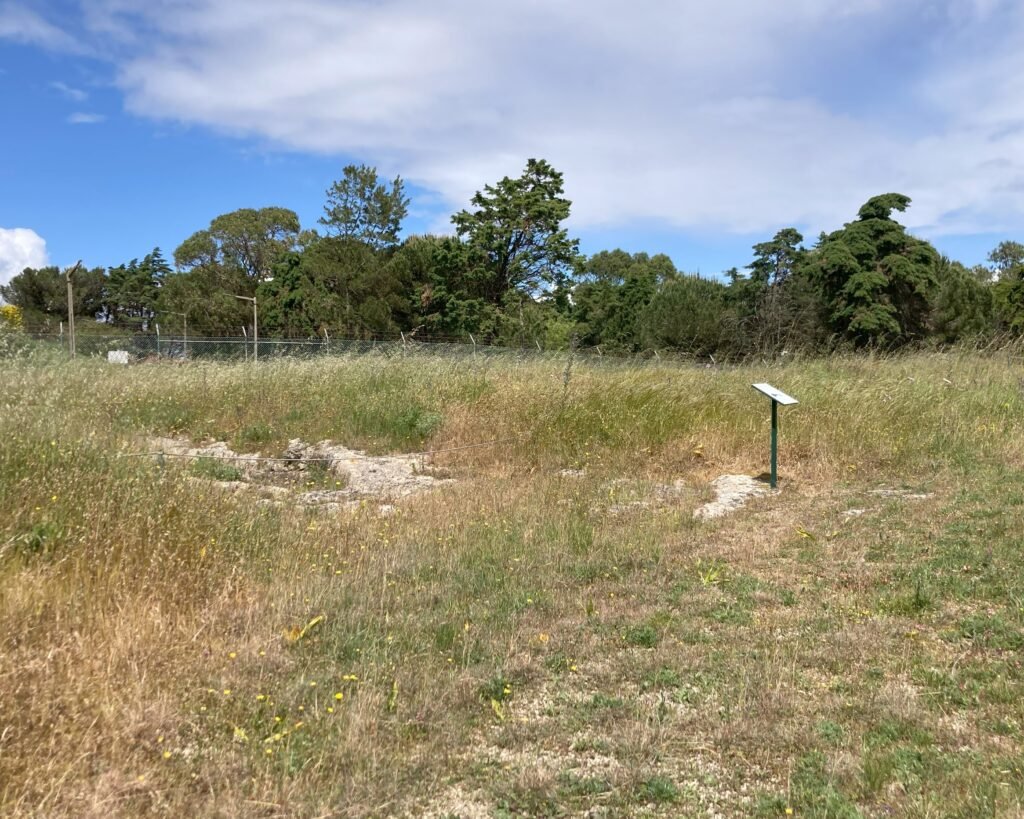


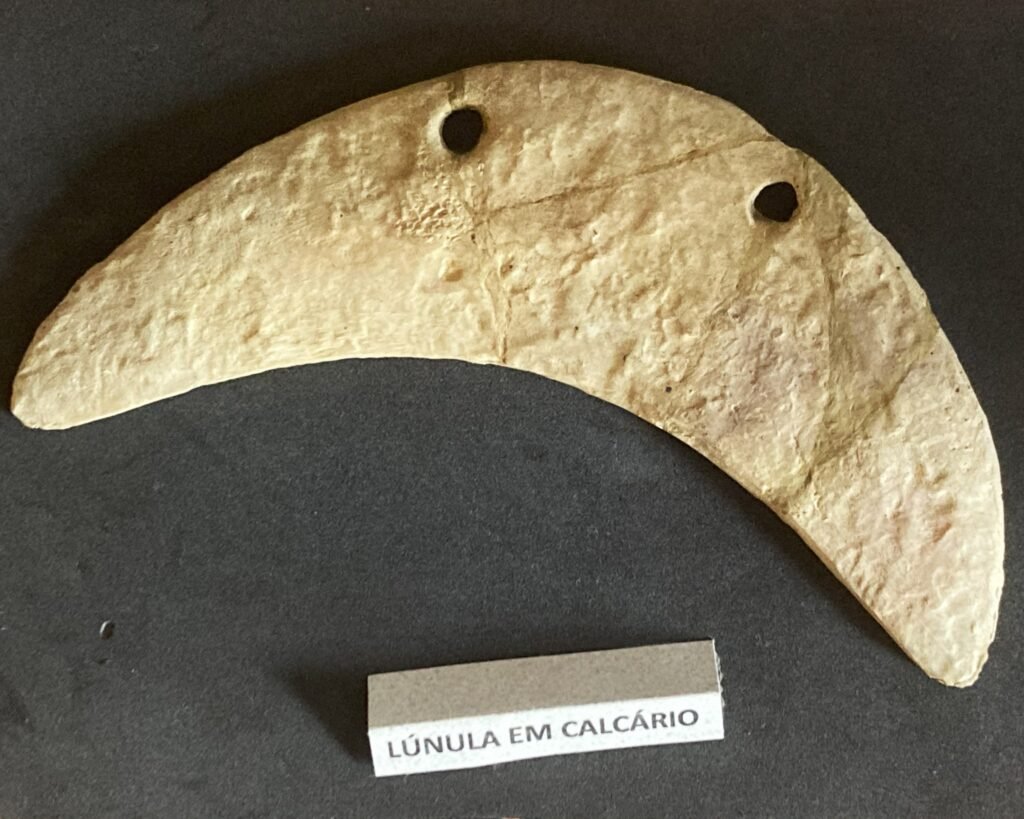
These are no ordinary holes in the ground. They are artificial caves: carved into the rock during the Neolithic period about 5,000 years ago. Caves such as these are called “hypogea” (Portuguese: hipogeus): underground temples or tombs. These caves were rediscovered in 1932 and excavated by archaeologist Manuel Heleno, director of the precursor to the National Museum of Archaeology. Skeletons, pottery, carved idols, stone tools, and more were discovered in the caves. There had been originally four, but one had been destroyed.
The three caves are numbered from east to west, so as you enter the monument you pass #3 first, and #1 last. They all follow a similar plan: a long corridor with covering stones leads to a circular chamber with a skylight capped by a flat capstone. Bodies were carefully placed in the chamber along with ornaments and votive offerings.
Cave #1 is the largest, and is the only one with the entrance facing to the northeast. The support stones for the corridor were in place when the caves were excavated in 1932.
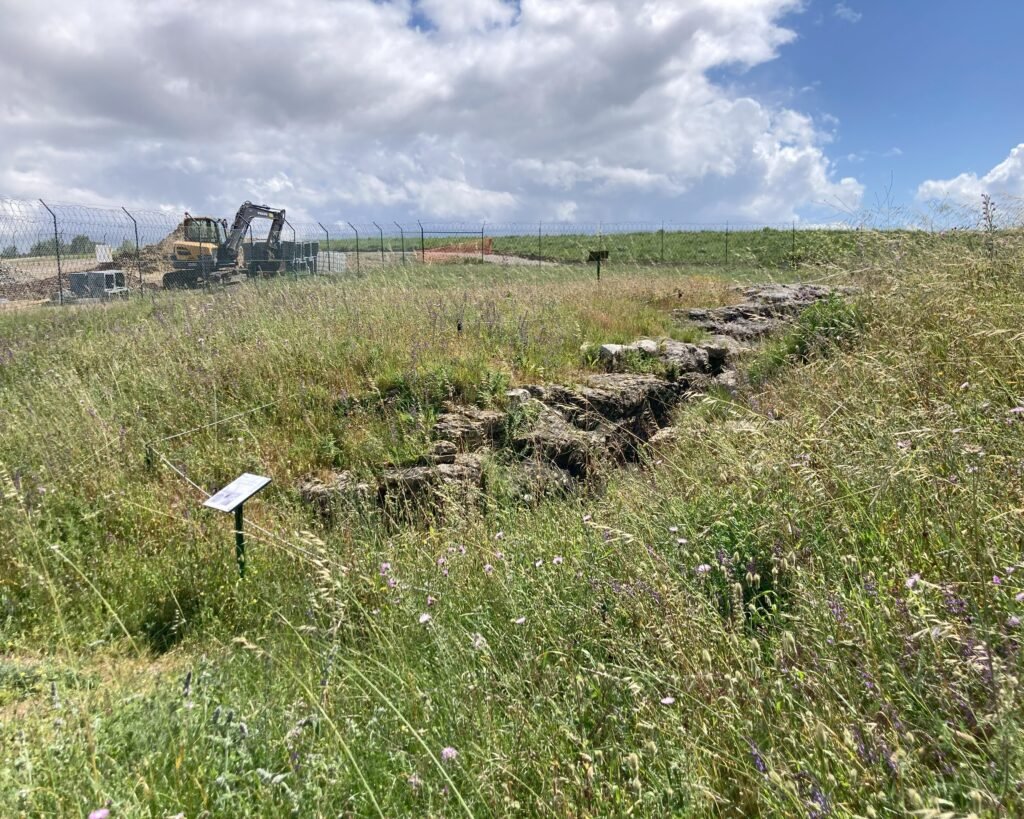
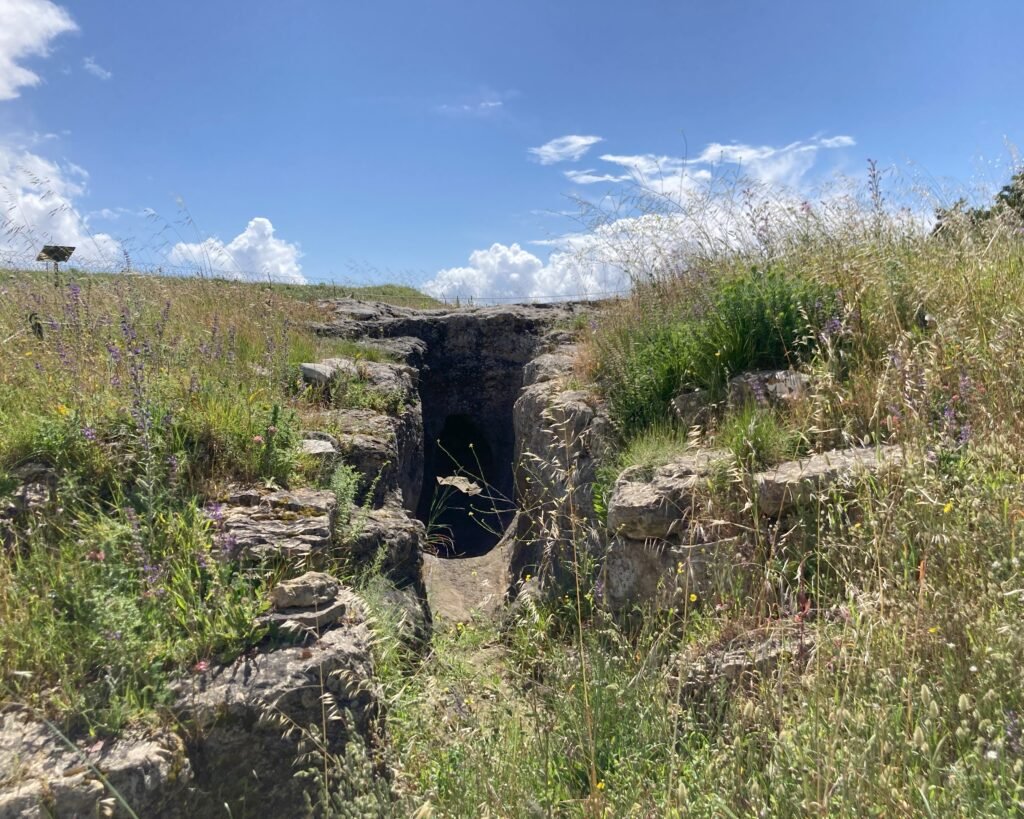

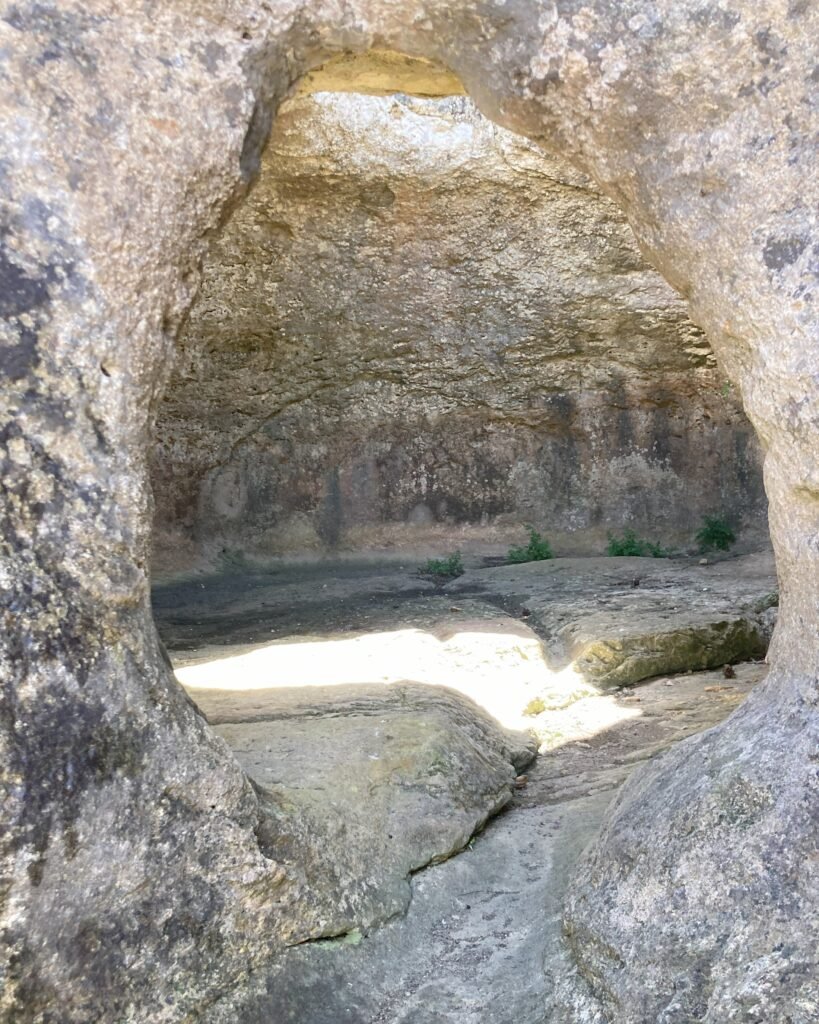

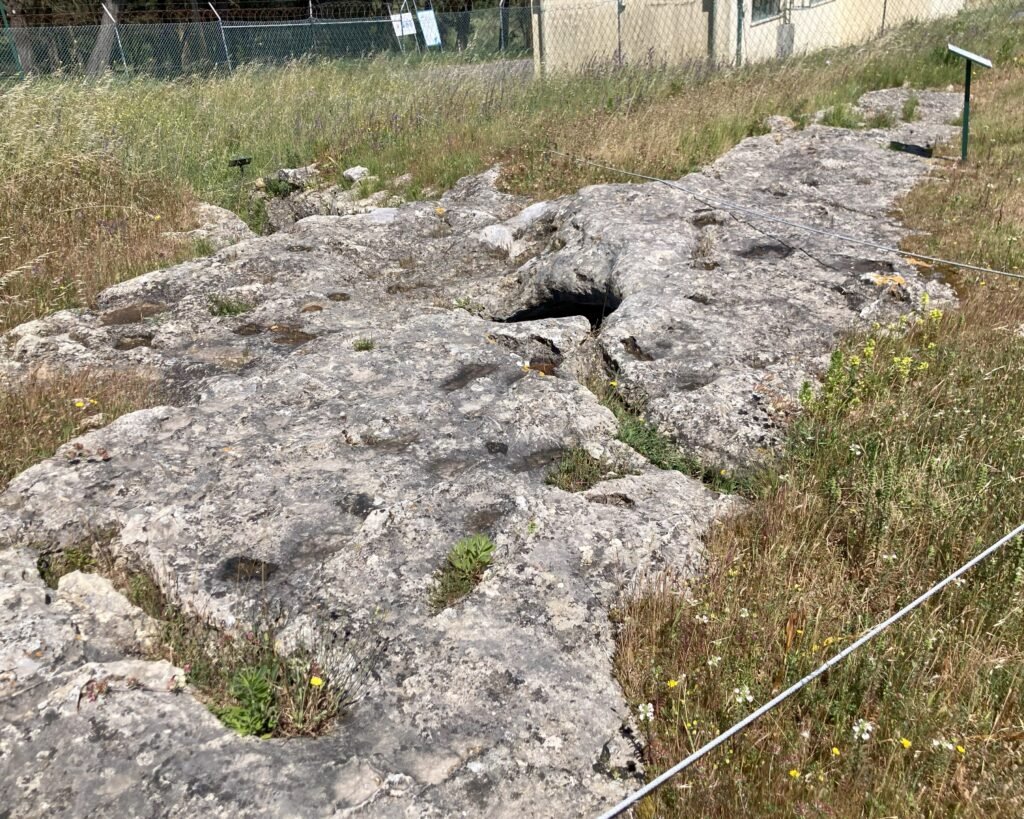
Cave #2 faces Southeast:
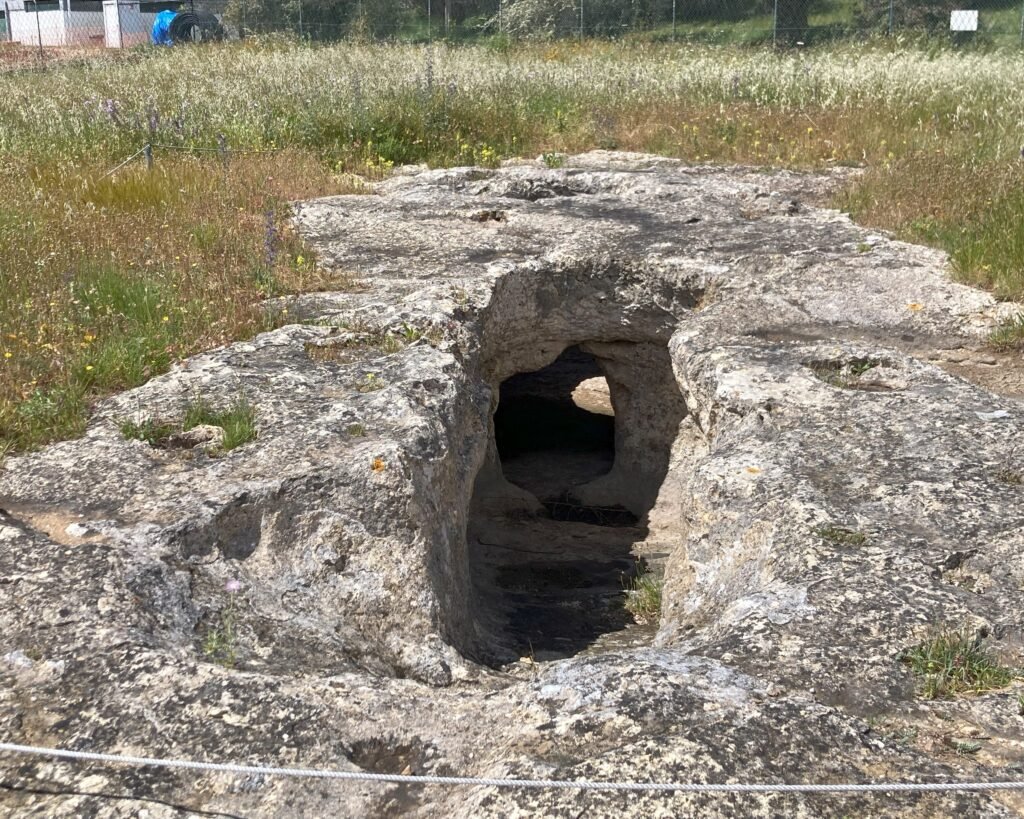
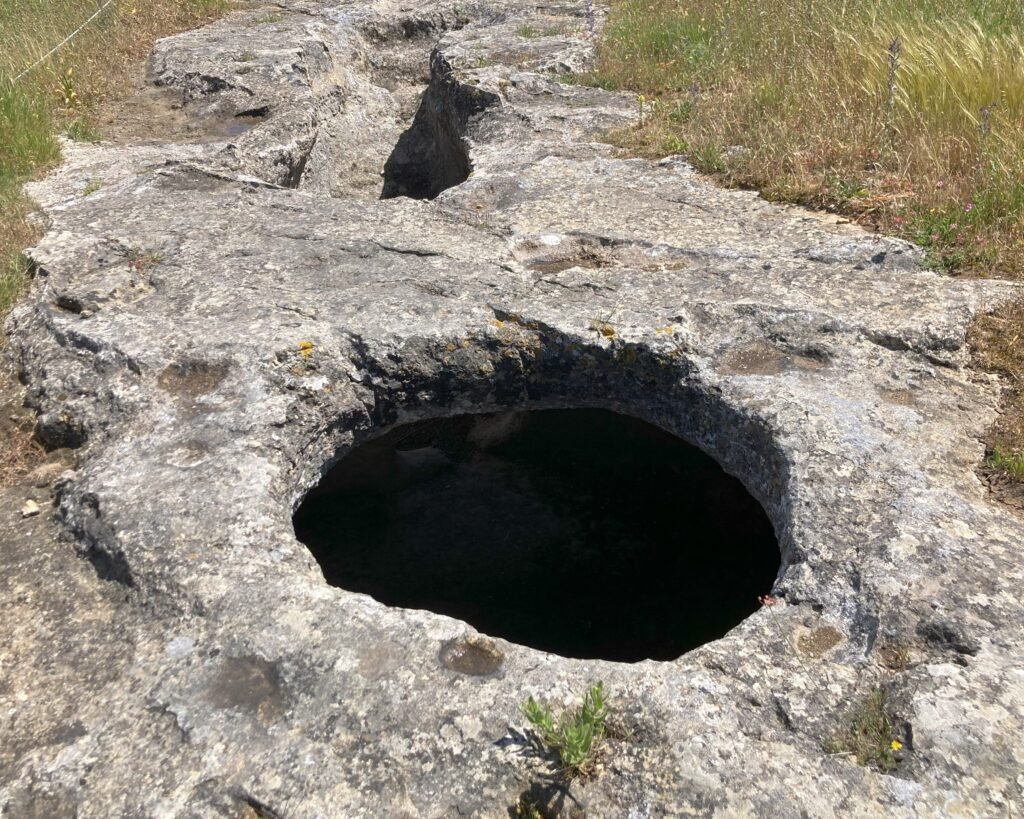
Cave #3 faces south-southeast and has a long and pronounced entrance corridor.
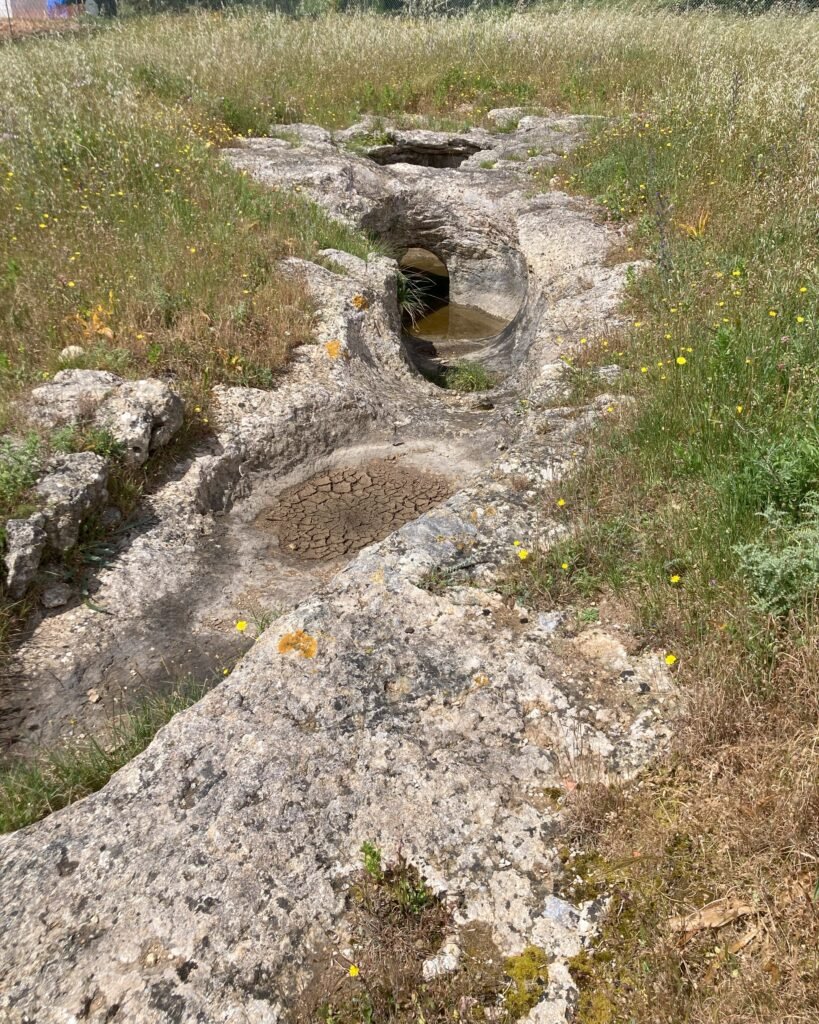

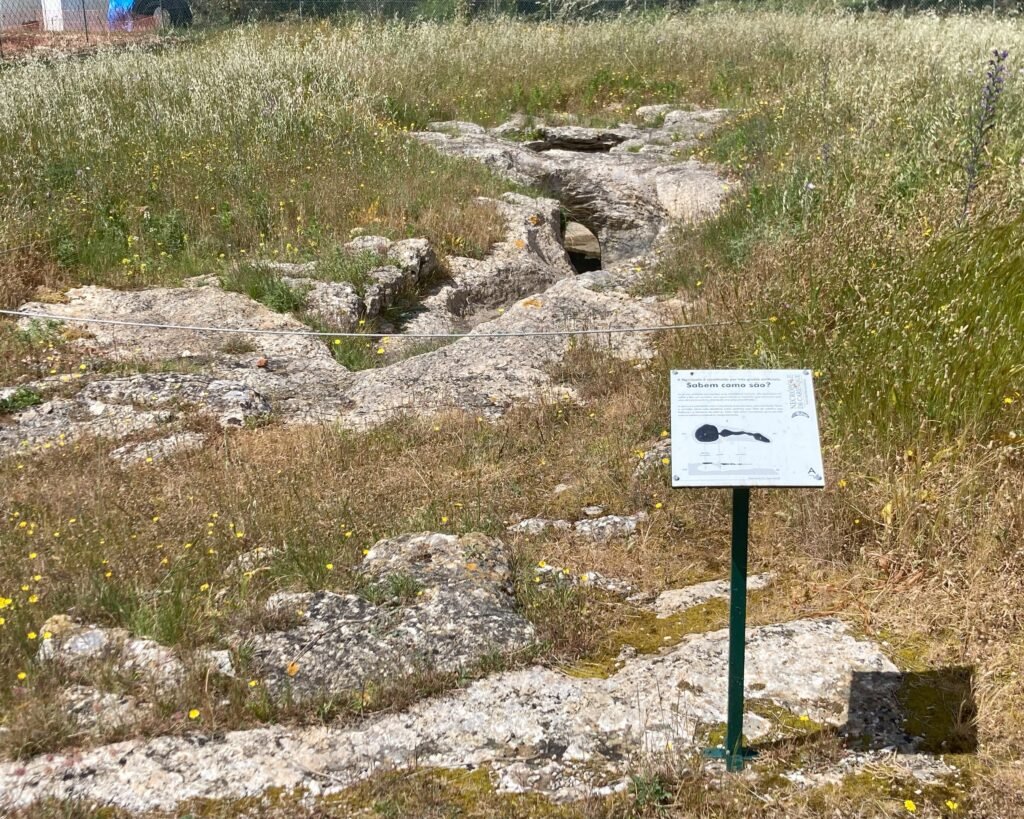
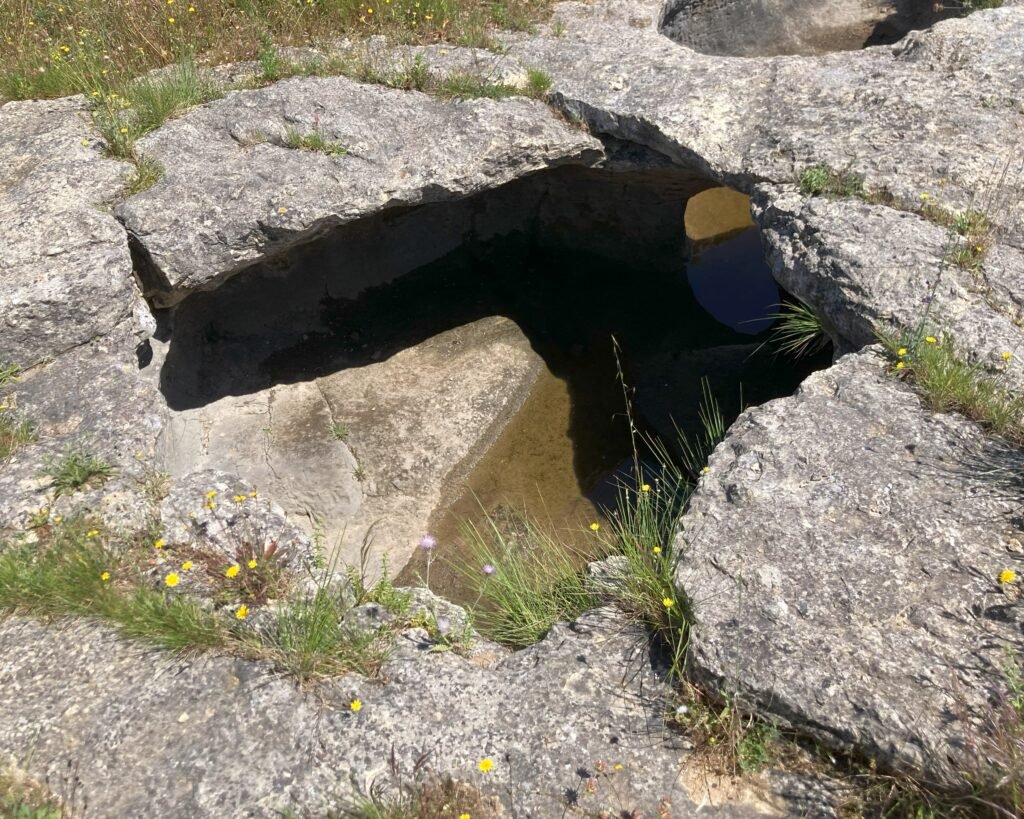
There is a small museum attached to the site, with some artefacts (or their reproductions) in display cases. There are also display boards with photographs and explanations, all in Portuguese.

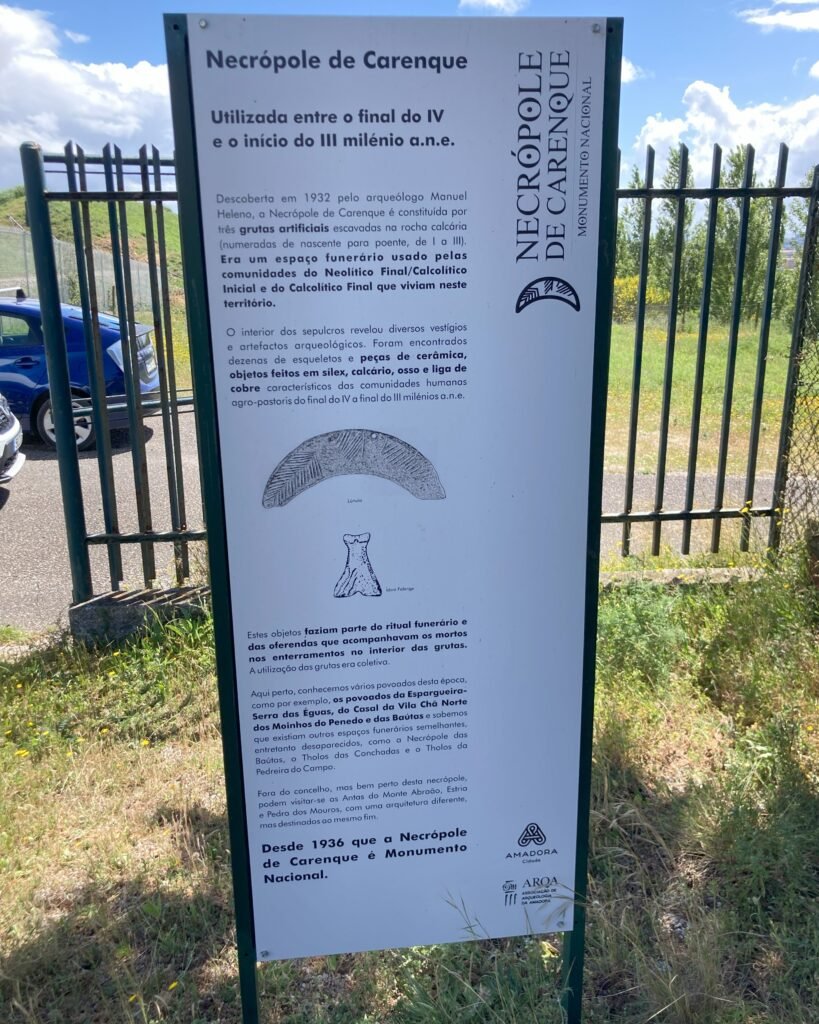
Location
The site is located in the neighbourhood of Carenque, in the town of Amadora (northwest of Lisbon).
Access
It’s easy to get to: you can drive to the entrance and then there’s a short walk to the three caves.
The site is only open on weekends: Saturdays from 2:00pm to 6:00pm (in Summer, 1 to 5 in Winter), and Sundays from 9:00am to 2:00pm (in Summer, 10 to 3 in Winter). Closed on major holidays (Christmas & New Year). Admission is free.
Signage
There are many signs in the area directing you to the site.
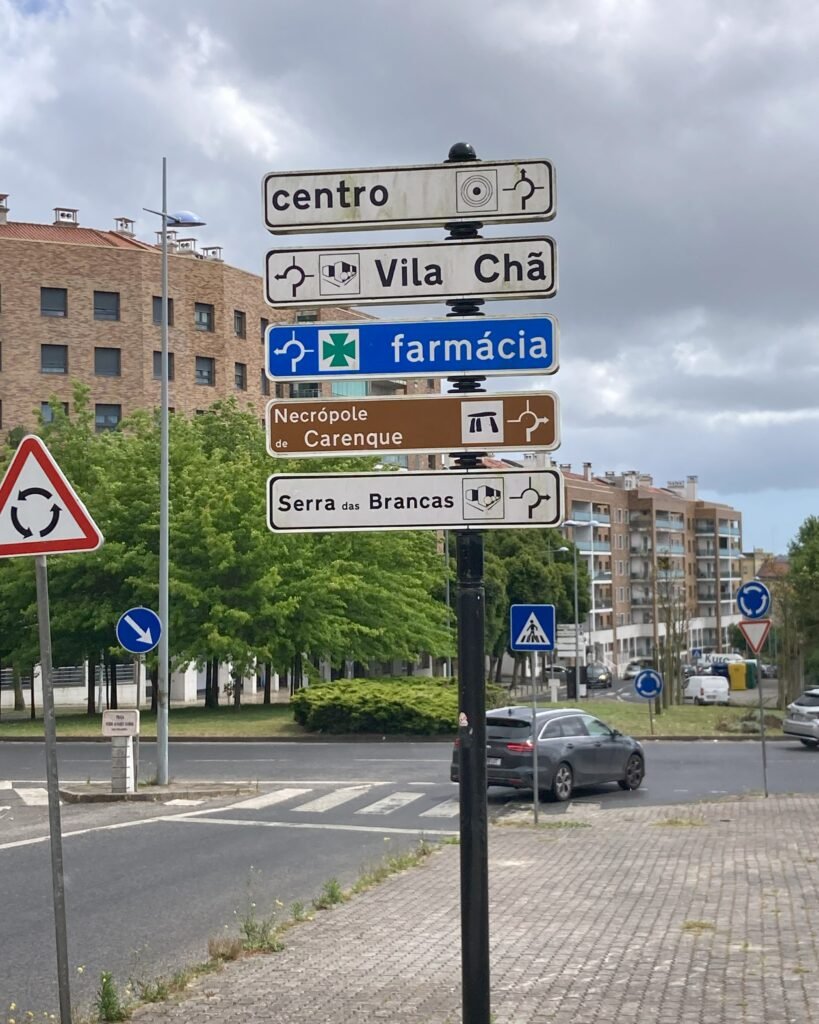



Links
- Entry (in English) from the Megalithic Portal
- Article (in English) from Wikipedia
- Article (in Portuguese) from the Town Hall of Amadora (plus article about the Museum Site)
- Brochure (PDF in English) from the Town Hall of Amadora
- A video (in Portuguese) from TV Amadora
- A video (in Portuguese with English subtitles) from Discovering Portugal
- Description (in English) from Visit Lisboa
- Description (in Portuguese) from ARQA (Archaeological Association of Amadora)
- Description (in Portuguese) from Archaeologists Portal of Directorate-General of Cultural Heritage
- Designation (in Portuguese) as a National Monument by the Director-General of Cultural Heritage
Nearby
There are many prehistoric sites in the area. The three Belas Antas (dolmens) are nearby (Estria, Monte Abraão, Pedra dos Mouros), as are the Anta of Agualva and the Anta das Pedras Grandes. The Natural Monument of Carenque (fossilized dinosaur footprints) is very nearby, but it is closed to visitors.
